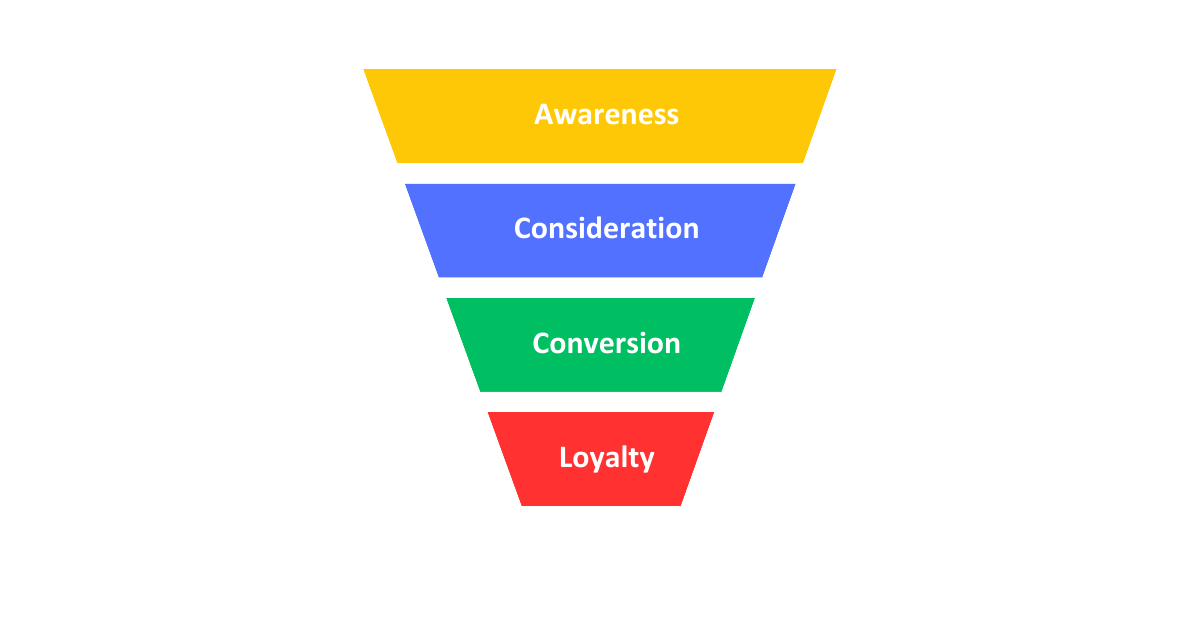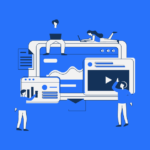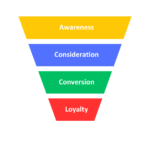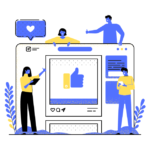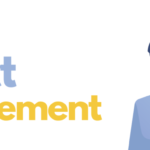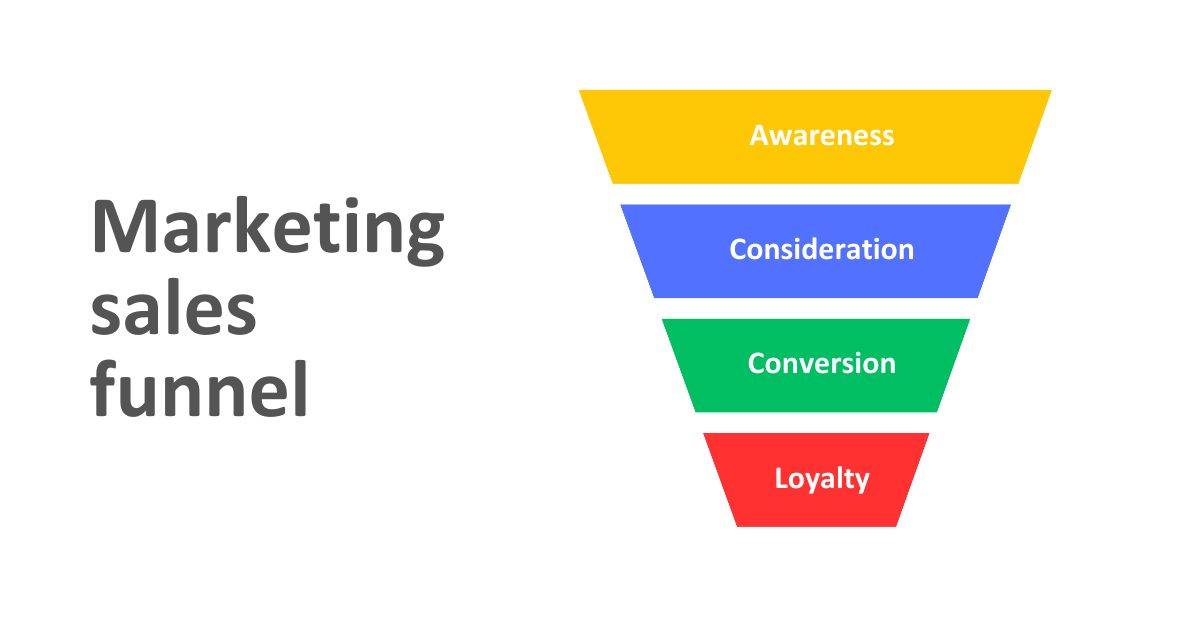
Digital marketing is an essential skill to have nowadays if you need to have sales in the right way. It is a meaning or an umbrella, and beneath it lies many principles, methods, and tools to achieve the optimum results based on your use case.
Your goal is to attract more customers and make more money right? I doubt there is something other than that. Great!
Let’s introduce the marketing sales funnel, its layers, and why you need to understand it.
What is the Marketing Sales Funnel?
Think about it; You have a product or a service you need to sell to potential customers, how do you approach this goal? Or, I will ask the same question but in another way:
You need to buy a product (let’s say a T-shirt), or a service, what steps will you follow to find the best one?
Here is a pretty usual scenario:
- You will search online for clothing stores or you will go physically to the market
- Then, you will see lots of results and images, in parallel, you will see posters as well as images and mannequins
- Once something catches your eye, you will click or stop to find out more about its quality, colors, design, etc. You will also read some reviews to see what previous customers said about it.
- Everything is alright, you decided to buy one. You need to find your size and select the color you like most. You might ask for help deciding which size will be the right fit for you.
- An agent helped you with which one to choose, maybe recommended a better fit, or might suggest pairing it with some pants or a hat.
- So far so good, you are now proceeding to check out, Congratulations. You bought a T-shirt.
- Now, you received your T-shirt, and it’s looking and feeling good! But wait, it’s not my size 🙁
- You reached back to the store, requested to return, and ordered another one. They were professional with you, apologized for any inconvenience, and offered an apology promotion.
- Finally, you got the right T-shirt with a promotion and you decided to buy more from them in the future.
That is what is called a customer journey. Each step in the journey is called a touch point, and a graphical presentation of it will be a customer journey map.
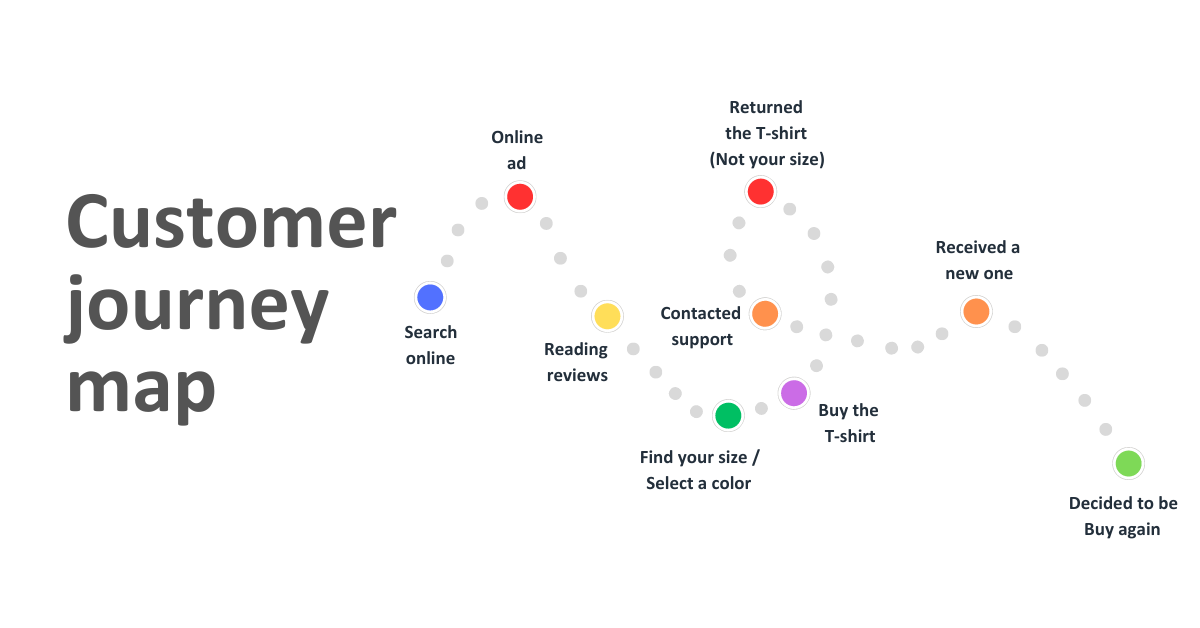
But where is the marketing funnel from all of this?
In short answer, you passed through the marketing funnel. Any customer or any sales made will follow a unique customer journey map and we can group or categorize the touchpoints made into each stage marketing funnel stage.
The Stages of the Marketing Funnel
Let’s break down each stage of the funnel and explore some effective tactics to leverage:
- Awareness
- Consideration
- Conversion
- Loyalty
1. Awareness
The first stage of the funnel is all about introducing your brand or product to potential customers. The goal is to generate brand awareness and capture the attention of your target audience.
Some common tactics for generating awareness include:
- Content marketing: Create valuable and engaging content like blog posts, infographics, and videos that resonate with your target audience and showcase your expertise.
- Social media marketing: Utilize social media platforms to connect with your audience, share content, and build brand awareness.
- Search engine optimization (SEO): Optimize your website and content to rank higher in search engine results pages, increasing visibility and organic traffic.
- Paid advertising: Utilize targeted paid advertising campaigns on platforms like Google Ads and social media to reach a wider audience.
- Influencer marketing: Partner with influencers in your industry to reach their followers and generate buzz around your brand.
- Public relations: Secure media coverage and press mentions to increase brand visibility and credibility.
Let’s get back to our example, now it’s not you but someone who decided to buy a T-shirt, and the first step they made is searching for a T-shirt. You, as a clothing store, need to be seen and even stand out from the crowded digital marketplace, you need to invest to be among the top results in the search engine results (SEO & SEM), and you need to create a digital existence in different social media platforms, you might pay for ads to show on different places in the internet, even you might partner with some famous influencer to promote your products, your BRAND NEEDS TO BE KNOWN.
To apply that to our proposed example, the first two touchpoints, “search online” and “online ad” will fit in the first stage of the sales funnel.
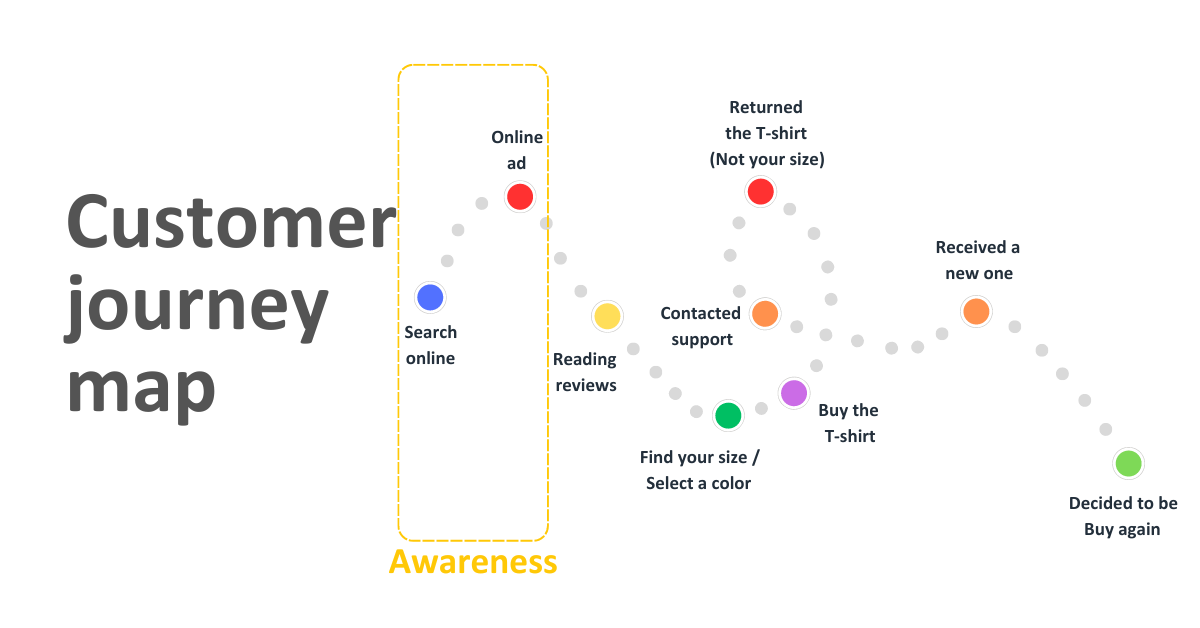
2. Consideration
Once potential customers are aware of your brand, the next stage is to nurture their interest and educate them about your products or services.
Key strategies for the consideration stage include:
- Email marketing: Send targeted emails with personalized content and offers to keep leads engaged and informed.
- Lead magnets: Offer valuable resources like eBooks, webinars, or free trials in exchange for contact information.
- Landing pages: Create dedicated landing pages with compelling copy and clear calls to action to capture leads.
- Retargeting ads: Display targeted ads to people who have visited your website or interacted with your brand to remind them of your offerings.
- Case studies and testimonials: Showcase the positive experiences of existing customers to build trust and credibility.
In our case, we are at the step where the potential customer -let’s name it “John” from now on- is interested in a T-shirt. Ask yourself, how do you make John consider buying my product?
There are many ways, like creating a compelling landing page where they don’t get lost and everything is put in place, highlighting previous customers’ reviews about your products. If John closed your website (Bounced), you might use retargeted ads so your product will show up on their Instagram feed! You can also highlight or include helpful information about your product, I mean by helpful really helpful, and so on.
We can put the following touchpoints “Reading reviews” and even “Find your size and color” under the consideration stage of the sales funnel.
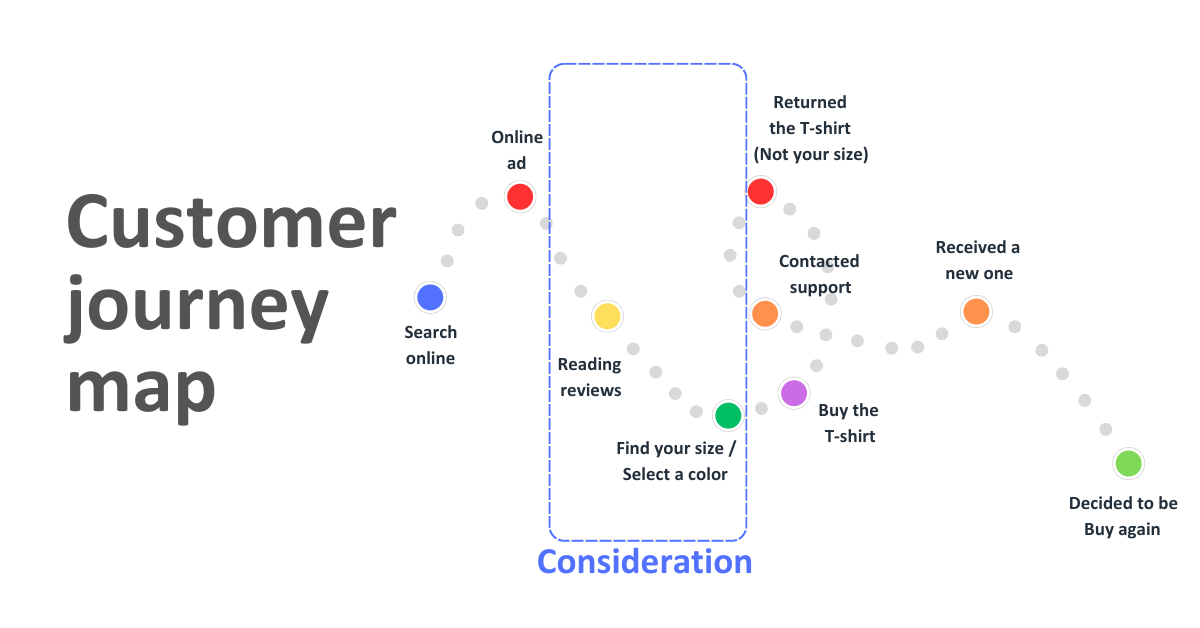
3. Conversion
The conversion stage is where leads finally turn into paying customers. This stage is all about making it easy for potential customers to take action and complete a purchase.
Some effective tactics for driving conversions include:
- Clear and compelling calls to action (CTAs): Use strong action verbs and clear instructions to guide users toward the desired action.
- Streamlined checkout process: Simplify the checkout experience by minimizing steps and reducing friction.
- Limited-time offers and discounts: Create a sense of urgency and incentivize immediate action with special offers.
- Product demonstrations and free trials: Allow potential customers to experience your product firsthand before committing to a purchase.
- Live chat and customer support: Provide readily available assistance to address questions and concerns during the purchase process.
Continuing our example, John added the selected T-shirt to their cart, what’s next? How can we make him proceed and check out successfully? Think about this stage of John’s journey.
At this stage, you need to highlight the call to action button which is the buy button, make it seen, and place it in a logical location on your website for example. Another way is that you can offer a welcome promotion by some percent maybe 10% for each new customer, free shipping.
Another thing, if John added the product to their cart and left the website, you can send an abandoned card email to remind him to proceed to checkout.
There are lots of tools and strategies to turn potential customers into paying ones, and this is the conversion stage.
The following touchpoints “Buy the T-shirt”, “Return the T-shirt”, and “Contacted support” are under the conversion stage.
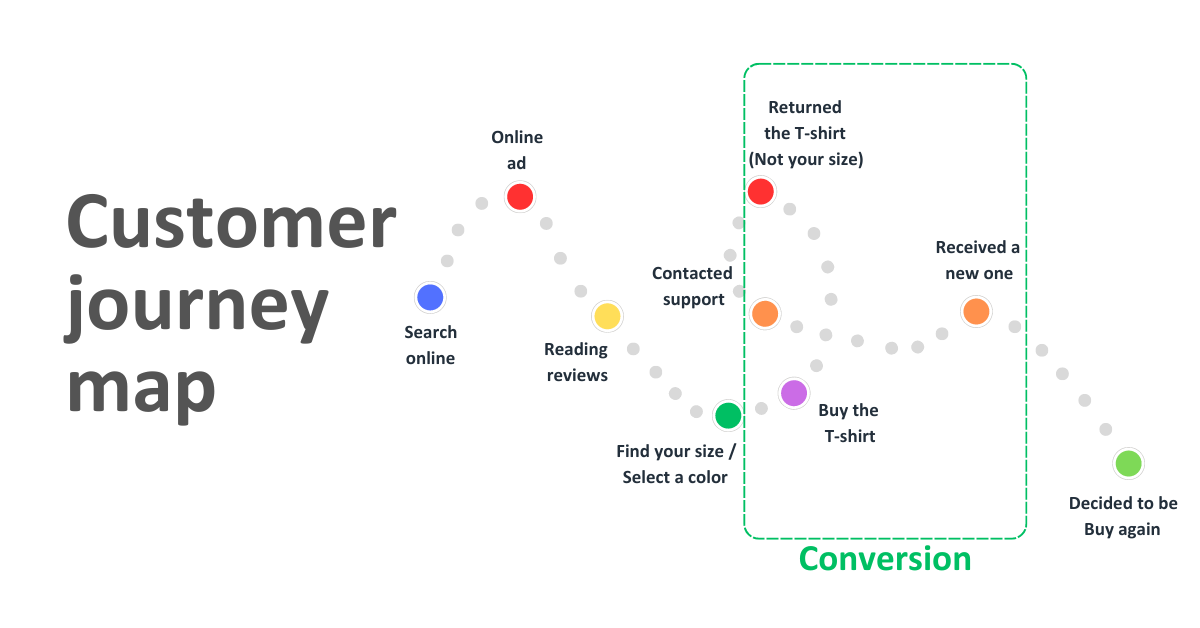
4. Loyalty
Acquiring new customers is just the first step. The loyalty stage is about building long-term relationships with your customers and turning them into brand advocates.
Strategies to foster loyalty include:
- Loyalty programs and rewards: Offer exclusive benefits and rewards to repeat customers to incentivize continued engagement.
- Personalized communication and recommendations: Utilize customer data to provide tailored recommendations and offers that resonate with individual preferences.
- Exceptional customer service: Provide prompt and helpful support to create a positive customer experience and resolve any issues.
- Exclusive offers and early access: Make your loyal customers feel valued by offering them special perks and early access to new products or features.
- Community building and engagement: Foster a sense of community and belonging by creating opportunities for customers to interact and connect.
Congratulations! John finally bought that T-shirt 🙂 but also we need to turn him loyal to your brand. How is that possible?
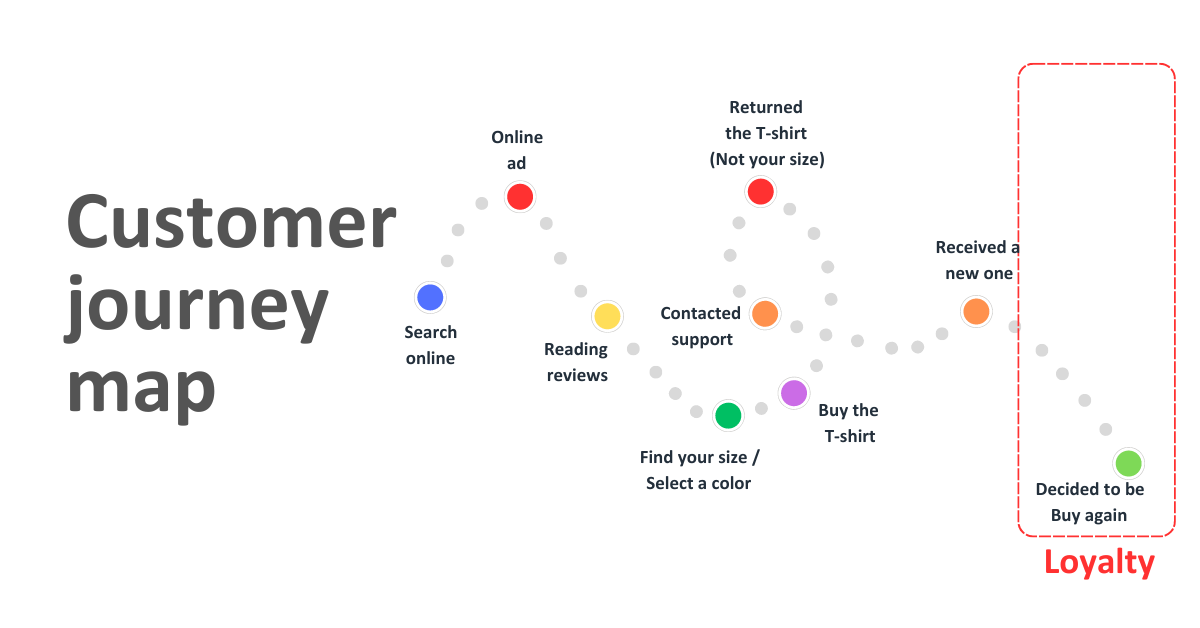
Send John a personalized promotion addressing their name in the email, make it personal not robotized. Be frequent in John’s email inbox, by sending promotions, and new collections, and creating a collection pre-release program, but don’t be too frequent as that might lead to a negative reaction and feedback.
Conclusion
The marketing funnel provides a valuable framework for businesses to understand and optimize the customer journey. By implementing effective strategies at each stage, businesses can attract, engage, convert, and retain customers, leading to sustainable growth and success.
Remember, the marketing funnel is an ongoing process. Continuously analyze and refine your strategies based on customer data and feedback to ensure you’re effectively guiding customers from awareness to loyalty.

